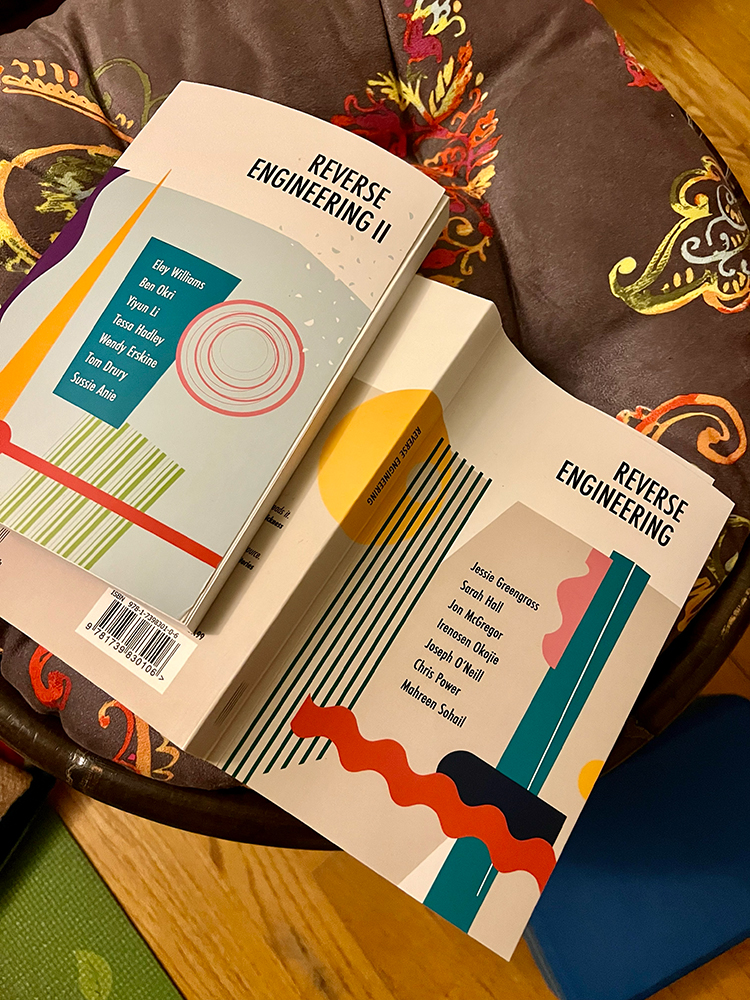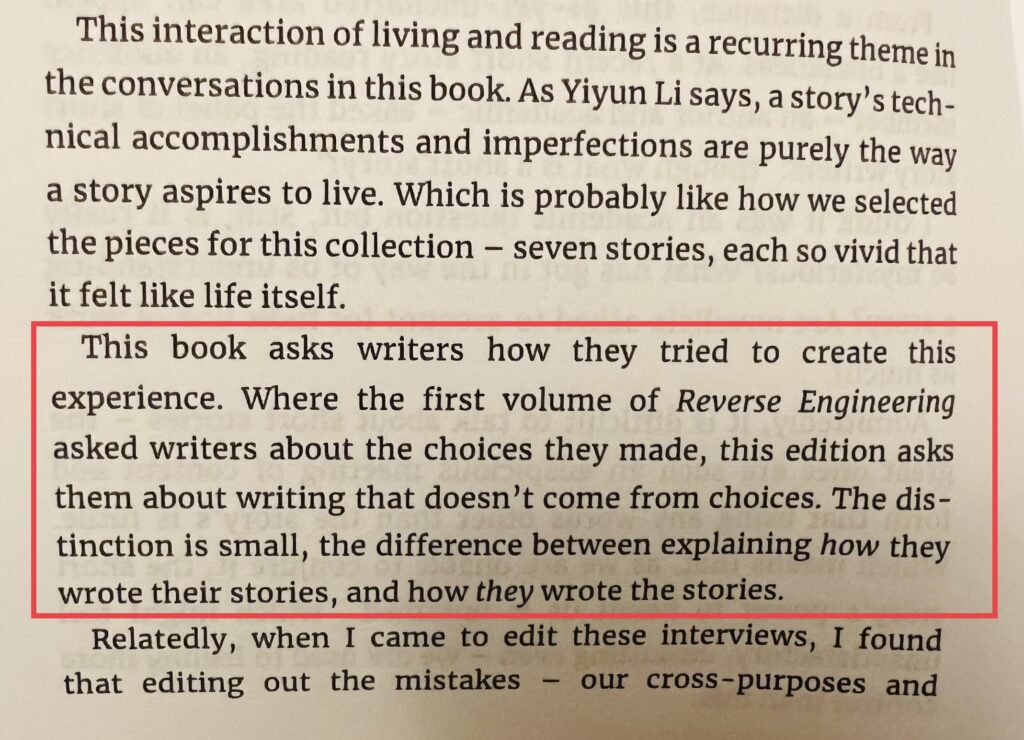December 11, 2022
Looking back to November
So, here we are: the last two months. Then why does November feel like January already? Is it because I am doing too much? Then why does it feel like I am not doing enough. Is it because of what I am doing? Is it because there isn’t enough time to process what I am doing? I don’t know. Not yet anyway.
These posts haven’t been reflective by any means. Reflection requires, time, time, and time. Or: time, rest, and solitude. I remember in the summer of 2019 I visited a friend and while we were catching up over tea, or maybe dinner, I was overcome with tears describing something as simple as my aunt, my mother’s sister, giving me a pair of earrings. That was the first time I had had enough time to reflect about something quite ordinary. But clearly very important to me. So, who knows how long these years will take…
These posts have simply been a way for me to document, for myself, that 2022 happened. It’s like a snafu–which comes from a term coined by soldiers during World War Two: situation normal all f*@ked/fouled up– happened in the time-space-continuum; and thereafter, time as we had understood it stopped registering the way it did before 2020. And, right now, it feels like it’s never going to be “normal” again despite any narrative to the contrary. It’s worse if your relationship with Time was bad to begin with. But we are resolute beings, we accept layers and layers of “new normals”; we are a forgetful species, we think it’s always been this way.
Even so, November began with the Golden Apple Excellence in Teaching award ceremony. Each recipient had to prepare a three minute speech and each recipient was asked to have a student introduce them in one minute. One minute!
I asked one of my students from 2021-2022 to introduce me. The number one reason was that she set the bar very high for the quality of instruction I aimed to deliver. She came to my class as an exceptionally bright student. She was advanced in the truest sense of the word. In fact, truly exceptionally gifted, which is sadly a misnomer now. In my district, as things currently stand, it doesn’t quite mean what the rest of the world thinks it means. She had already exceeded the requirements for all the standards and was repeating the grade because her parents felt, and correctly, that she was too young to start high school. She was mature, sure, but still young. She was a high achiever, no doubt. If I assigned her SAT words, she would have memorized them in a day. If I assigned her research, it would be done, correctly, in a week. What could I provide for her?
It was as challenging a task as the demands presented by my students in a different section who were reading far below grade level, had no interest in reading, intermittently participated in the 14 months of online schooling, and learning was a curse they had to endure.
Kate raised the bar for her entire section because the curriculum I created for this cohort required them to not just read, write, and think, but also create, authentically learn to debate, and most importantly question themselves. I took it upon myself to implement my guiding principle as an educator at its optimum:
I regard it as the foremost task of education to insure the survival of these qualities: an enterprising curiosity, an undefeatable spirit, tenacity in pursuit, readiness for sensible self-denial, and above all, compassion.
Kurt Hahn.
When I informed Kate that I would like her to introduce me, she graciously accepted. As the date of the awards ceremony came closer, Kate asked if I would like to review her introduction speech and I told her that wasn’t necessary: I trusted whatever she had to say.
Yes, the ceremony was grand; yes, my speech (which I woke up in the middle of the night to revise in its entirety when I only had the next morning to practice) was really well received; yes, it was one of the greatest honors of my teaching career; yes, I met other wonderful educators; yes, I shocked myself by thanking God in public for giving me the fortitude to show up for my students and their families for the last two years; but, it was Kate’s one minute speech that stole the entire ceremony! She was confident, articulate, didn’t go over the time limit, and what she said was not simply for me or about me, but a call for all educators to create opportunities for their students to think for themselves and to question everything. I have it on video and perhaps over winter break I will share it here. Her parents have generously given me permission to use these images (and the speech).

Right after the ceremony, I caught a flight to California to make it to my niece’s birthday which was on the day of the ceremony, but I got to celebrate her 6th birthday the following day. It was absolutely magical. She is such an old soul and she is my absolute jaan.


And then leaves turned…

and fell…
Jamie and I took to the road again, north, to Taos for our anniversary.



We discovered the work of artist Charles Collins. The gallery was open and a photographer, Brian Hudzik, welcomed us. It was lovely to chat with him. Usually the artists in Santa Fe, in Taos too, are quite pretentious because they come from generational wealth and are hardly ever from New Mexico. There are exceptions, but those are far and few. This was the few and we were delighted. Charles Collins’ work came to him in a dream. The sculptures consist of multiple components and are always united by a woman in the middle. They look different apart, together, and when viewing them from the side or the back.


I finally returned to thinking about my writing in November. I let go of the shame and guilt of having promised a finished novel in December 2021 or March of 2022 or July of 2022 or even September of 2022. Having written these posts I now realize how did I ever imagine that there was even a remote possibility? When? When.
I came across this astute essay, “Why Everyone Underestimates How Long It Will Take To Write a Book (And What to Do about It)” by Louise Tondeur. She addresses the issue all writers experience:
At one end of the time management continuum, it feels like we have far too much going on in our lives to fit in any writing time, at the other end, like the postcard writer in Bognor, we have far too much time on our hands and therefore it’s easy to put off writing, because we could do it another time, or we spend too much time editing over and over without sending the work out.
She explains:
I said that our postcard writer was the key to making these seemingly dissonant concepts work together. That’s because she has all day to choose, write and post that postcard. Would it really take all day? Of course it wouldn’t. What would you do if you had all day to write that postcard? More to the point, what would you do if you had all day to work on your writing? You’d spend some time on your writing, some time staring into space (good), some time cooking yourself a lovely lunch or going to a café (also good) – I like to think of our postcard writer talking high tea at the Beachcroft Hotel – maybe you’d go for a walk, go swimming, or phone a friend. All good. These things are arguably not procrastination; you need to do them to write at your best, or you’re simply living your life. Back to the key question: how much time would you spend writing?
According to research by Anders Ericsson, when they have total control of their time working writers ideally spend 4 hours writing a day. It seems that when faced with a choice, most writers do not prefer out and out productivity. Most find a balance between focused writing time and everything else. So if you’re tempted to be self-critical about the way you approach your writing time, take heart, and take time management ‘laws’ with a pitch of salt.
I don’t think I can create 4 hours, but writing these posts has shown me I can create some time despite everything. It’s been exhausting, but it’s possible. For me, not “doing anything” is a very significant part of being productive when it comes to writing.
I also had the opportunity in November to take a Masterclass by one of my favorite short story writers, also a teacher, Wendy Erskine. She doesn’t have a website, so I am linking to her Twitter profile. But if you “google” her, there are plenty of interviews and more. She is an incredible teacher and is still teaching (granted, not anywhere, USA). The class was at 3:00 a.m. my time and worth every minute. Thereafter, I felt I had turned around a learning curve when it came to my writing. Currently, I am reading Reverse Engineering II which is also very timely for me.






I loved how you describe Kate’s presence in your class and how it stimulated a year of creative expression and thoughtful questioning experienced by all your students. One of the best things is that you have never, never underestimated the creative potential of your students. Therefore, you draw them into discovery of that potential in themselves, and open them into leaps of thinking, writing, and speaking. Blooming in the desert, together. So glad you could share this wonderful moment and occasion with your student.
Thank you for expressing that, Lucy. It’s very true, curiosity and compassion go hand in hand for me as an educator. Some days I think it helps that I am so creative myself, but other days, it’s tough given curiosity, creativity, experience etc. are just being sucked out of the entire learning system.